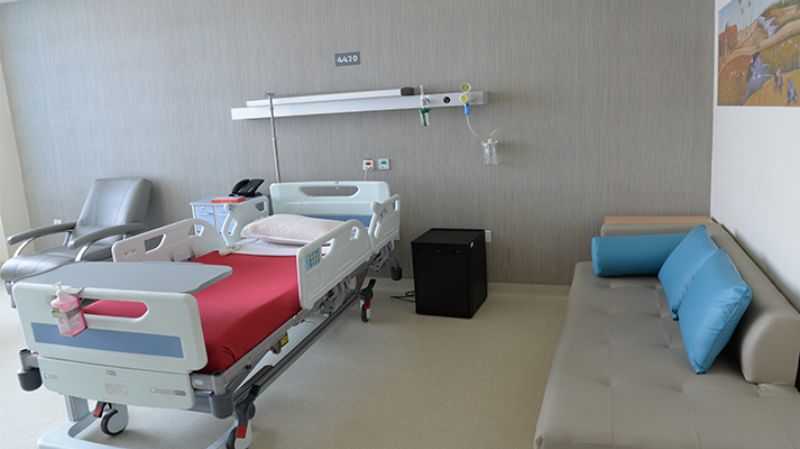Imagine this: your loved one falls ill, requiring hospitalization. Relief washes over you, knowing your health insurance will cover it. But as the bills roll in, a shocking discovery – a hidden ceiling looms over your coverage, silently capping the amount reimbursed for the critical hospital room. This, my friends, is the often-unnoticed reality of hospital room rent caps, a clause lurking within many health insurance plans that can significantly impact your family’s financial security during a medical emergency.
Fear not, for knowledge is power! Unmask this hidden clause and its potential consequences with this detailed guide. We’ll delve into the nitty-gritty of room rent caps, understand their impact on your claims, and equip you with tips to navigate this healthcare maze confidently.
Understanding Room Rent Caps
In India, many health insurance plans for families set a cap on how much they’ll cover for your daily hospital room rent. They call it the “room rent cap.” This cap can be a fixed daily amount, a percentage of your total coverage, or a mix of both. For instance, your policy could have a cap of Rs. 5,000 per day or 1% of your total coverage, whichever is less. It’s like a limit to how much they’ll pitch in for your room expenses daily.
Impact on Claim Amount
Direct Impact: If the actual cost of the hospital room exceeds the cap, the insurance company will only reimburse up to the capped amount. You will have to bear the remaining cost yourself. This can become a significant financial burden, especially for prolonged hospital stays or expensive room categories.
Proportionate Deductions: In addition to the direct cap on room rent, some policies also have a “proportionate deduction” clause. If you choose a room exceeding the cap, the insurance company may proportionally reduce their reimbursement for other covered expenses. For example, if the cap is Rs. 5,000 and you choose a Rs. 7,000 room, the insurance company might reduce their reimbursement for other expenses by 20% (the ratio of Rs. 2,000 excess to Rs. 5,000 cap).
Factors to Consider
● Type of Policy: Comprehensive health insurance plans for family usually have higher room rent caps than basic plans.
● Family Needs: Consider your family’s medical history and potential healthcare needs when choosing a policy. If you anticipate requiring specialized rooms or prolonged stays, choose a plan with a higher or no-room rent cap.
● Financial Outlay: Be aware of the out-of-pocket expenses you might incur if the room rent exceeds the cap.
Tips for Managing the Cap
● Choose the fitting room: Opt for a room category within the capped amount to avoid out-of-pocket expenses. Discuss options with your doctor and prioritize medical needs over comfort amenities.
● Compare plan options: Look for health insurance plans for family with higher room rent caps or policies without sub-limits on room rent. Be prepared to pay higher premiums for such plans.
● Communicate with the hospital: Before agreeing to one, understand the charges associated with different room categories. Negotiate with the hospital for reasonable rates within the capped amount.
● Plan for future needs: Regularly review your health insurance coverage and adjust your plan as your family’s needs evolve. Consider riders or top-up plans to enhance coverage for critical illnesses or specific needs.
Beyond the Caps: Understanding Alternative Solutions and Top-up Options
While understanding room rent caps and navigating the network is crucial, it’s vital to acknowledge that they might only sometimes provide complete financial protection. What if your needs exceed the capped amount or your desired hospital falls outside the network? Fear not, for there are alternative solutions and top-up options to bridge the gap:
Alternative Solutions
● Super Top-up Plans: These offer additional coverage over your existing policy with a higher sum insured and minimal sub-limits, mitigating the impact of caps and providing broader financial security. However, they come with increased premiums.
● Hospital Cash Benefits: Some policies offer fixed daily cash benefits during hospitalization, regardless of actual expenses. This can help cover ancillary costs not covered by insurance, even if it won’t directly impact the room rent cap.
● Critical Illness Riders: These riders specifically cover pre-defined critical illnesses with a lump sum payout upon diagnosis. This can manage healthcare expenses not covered by your regular policy, including potential room rent overages.
Top-up Options
● Top-up Health Insurance: These plans increase the sum insured of your existing policy, expanding your coverage without replacing it. They often have higher deductibles but lower premiums compared to super top-up plans.
● Specific Disease Top-up Plans: These targeted plans offer additional coverage for specific diseases like cancer or cardiac problems, providing extra financial support for expensive treatments.
Conclusion
Finding the best solution for you depends on your needs, budget, and comfortable with risk. Consider your family’s medical history, potential healthcare needs, and financial situation. Chatting with an insurance advisor is a good idea to figure out the perfect fit for your unique situation.
By exploring alternative solutions and top-up options, you can tackle the limitations of room rent caps and create a more solid health insurance plan for your family’s well-being.
And hey, your health insurance journey is more than just paperwork and bills. It’s about looking out for your and your loved ones’ well-being. So, keep yourself in the loop, take charge, and don’t shy away from relying on the support of your healthcare team. They’ve got your back!

